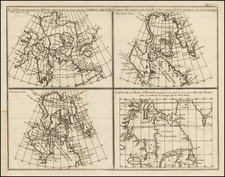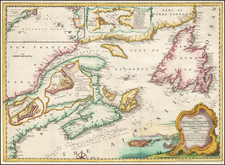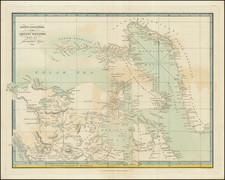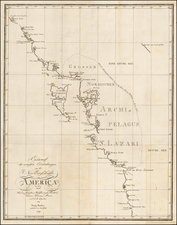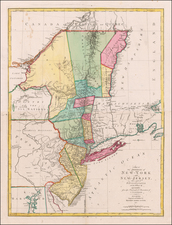Rare large format plan of Ottawa, colored by wards. The map notes that it as "Examined and approved by Robert Surtees, C.E. , 1st January 1885.
The map depicts the town in extraordinary detail, locating the public buildings, streets, parks, squares, hotels, bridges, railroad lines, some early property owners, canals, wharves and the Village of New Edinburgh across the River.
A.S. Woodburn's map of Ottawa is one of the earliest obtainable large format maps of Canada's Capital. Printed in Montreal by George Bishop & Company Steam Lith., the map provides a highly detailed look at Canada's Capital, less than 50 years after its creation. Woodburn was the publisher of the Ottawa Free Press and the publisher of one of Ottawa's earliest City Directories, who by the mid 1880s was one of Ottawa's leading printers.
Robert Surtees was one of Ottawa's earliest architects, who designed a number of Ottawa's earliest buildings, including the Wallis House and Carleton County Courthouse (Arts Court).
The area was first settled in 1800 by Philemon Wright of Massachusetts who brought 6 families and 25 laborers to start an agricultural community on the north bank of the Ottawa River at the portage to the Chaudière Falls. Wright discovered that transporting timber by river from the Ottawa Valley to Montreal was possible, and the area was soon booming based almost exclusively upon the timber trade. After the War of 1812, the government began sponsored immigration schemes which brought over Irish Catholics and Irish Protestants to settle the Ottawa area. Along with French Canadians who crossed over from Quebec, these two groups provided the bulk of workers involved in the Rideau Canal project and the booming timber trade, both instrumental in putting Ottawa on the map.
The area grew significantly when the canal was completed by Colonel John By in 1832. It was intended to provide a secure route between Montreal and Kingston on Lake Ontario, by-passing the stretch of the St. Lawrence River bordering New York State. Construction of the canal began at the northern end, where Colonel By set up a military barracks on what later became Parliament Hill, and laid out a townsite that soon became known as Bytown. The west side of the canal became known as "Uppertown" where the Parliament buildings are located, while the east side of the canal (wedged between the canal and Rideau River) was known as the "Lowertown". Ottawa became a center for lumber milling and square-cut timber industry in Canada.
Bytown was renamed Ottawa in 1855, when it was incorporated as a city. On December 31, 1857, Queen Victoria selected Ottawa as the Capital of Canada, largely motivated by its central location between Canada East and Canada West, although it was then just small logging town.
The map is apparently quite rare, with only 2 examples located by OCLC (Canadian National Archives and York University).










